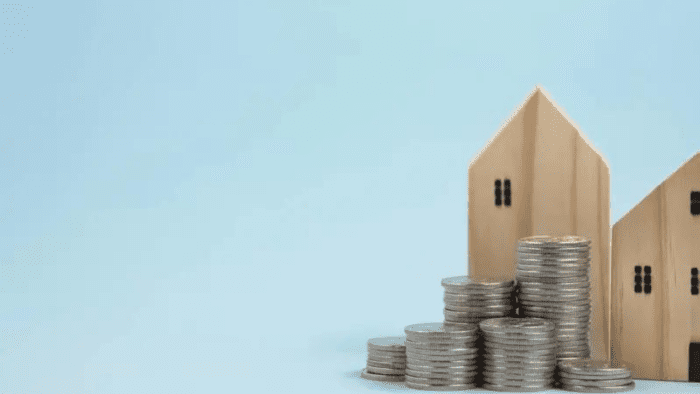
How do we correctly estimate the value of a property? There are numerous ways to determine the value of a property, each method using different calculations and considering various characteristics such as location, living area, construction year, number of rooms, inclusions (pool, terrace, veranda), proximity to schools, shopping areas, public transportation, current market conditions (buyer’s/seller’s market), city migration, and more. You can do a comparative market analysis, calculate according to the price per square meter, have a professional do the estimation, or use online estimation tools. One of the best online platforms for estimating the price of Canadian real estate is HouseSigma.
Price is the most important factor when buying or selling a house. Home sellers need to get that balance of trying to get as much as they can but still price their property at fair market price to be able to sell within a reasonable time frame. Home buyers, on the other hand, want the lowest price they can get, avoid overbidding, and leave less money on the table for sellers.
HouseSigma: Leading AI Tech for Automated Canadian Home Valuation
According to their website, “HouseSigma is a leading technology platform that utilizes artificial intelligence technology to correctly estimate the value of a property home values in real-time. With one click, home buyers can obtain an accurate automated home valuation for every listing within seconds. The HouseSigma algorithm also correctly identifies similar nearby sold properties to help buyers determine their final offer price!”
CEO, Joseph Zeng, shares that “HouseSigma believes with better data potential homebuyers and sellers can make better decisions when it comes to buying and selling their home,” that is why they utilize over 18 years of sales record in Great Toronto Area, Great Vancouver Area, Ottawa & Ontario (from 2003 to present) to develop their algorithms to come up with the most precise home valuation for users.
With HouseSigma, you can:
- Get a good home valuation approximation for every listing.
- Check the final selling price for houses sold to help buyers determine their final offer price.
- See potential rents for investment properties and the expected rate of return.
- See and drill down market trends per city, per community, and even per property type.
- Check their prices and demand reports and real estate blogs for a market overview.
Why HouseSigma?
HouseSigma provides a wealth of information on real estate. With its simple interface, you can easily browse property values (past and present), view current listings (for sale or lease), previous listings (sold, rented, terminated), along with property details like listing history, facts about the house, home value, comparable sold homes, community stats, and demographics. It has helpful tools like a mortgage calculator, cash flow analysis, and a handy sidebar for scheduling a tour with a HouseSigma Agent. Compared with other online tools like Zoocasa, HouseSigma offers more comprehensive information at just a click. You can watch listings and receive notifications when they are sold and even when there are new listings that match your preference on the market.
With HouseSigma, you don’t need to contact and pay a real estate agent to give you all this information.
Creating a HouseSigma account is free and easy; you can sign up using either your email or mobile number. It is available as a mobile app on the App Store for Apple devices, Google Play for Android, and online at housesigma.com.
The Comparable Sales Approach Simplified
The sales comparison approach or comparative market analysis (CMA) is a method of assessing property value by analyzing similar properties recently sold to establish the true market value of a certain property.
Real estate investors and appraisers rely on this method, finding value through selecting appropriate comparables and assessing differences. It is advisable to do this kind of manual approach as automated valuation models can be inaccurate at times.
To do this, first, you need to select recent sales similar to the subject property. Ideally, comparable properties match in neighbourhood and price range, but exact similarity in lot size, bedrooms, or age isn’t necessary. Usually, three to five comparable property sales are used in the analysis.
Adjustments for comparable sales should reflect differences in time, conditions, and features relative to the subject property. Property Metrics lists nine categories where the price difference can fall under:
- Cash Equivalency
- Conditions of Sale
- Market Conditions – buyer’s market vs seller’s market
- Ownership Interest – fee simple interest vs. leased fee interest
- Physical Characteristics – age, condition, quality, design, and features
- Economic Characteristics – operating expenses or management expenses
- Locational Characteristics – location-specific factors like transportation, traffic patterns, school quality, shopping availability, and access to adequate utilities
- Non-realty Components of Value – the sale may include furnishings or other items of personal property, intellectual property, or ongoing business value
Adjustment prices are set to align comparable properties with the subject property, ensuring accurate valuation and market comparability. This is a subjective process and having knowledge and experience in real estate makes it more accurate.
Comparable Sales Approach
Doing a simple comparison sales analysis is possible with the information you can get from HouseSigma. Listing details may include building size, lot size, age, features, and highlights, accessible under Property Key Facts and Details. Check out the Sold Comparable section to get other comparable properties. HouseSigma, though lacking precise property details, remains valuable for quick estimates, especially during initial mortgage or property considerations.
Below is an example of a comparable sales approach done in Excel:
| Factors: | Subject property | Comp 1 | Comp 2 | Comp 3 |
| Size | 2630 feet² | 4300 feet² | 2500 feet² | 3500 feet² |
| Building Age | 31-50 | 50+ | 31-50 | 50+ |
| Physical Condition | Great | Good | Great | Good |
| Location | Prime | Good | Secondary | Prime |
| Time of Sale | 0.58 | 0.42 | 0.25 | |
| Sales Price | $2,350,000 | $2,225,000 | $1,325,000 | $2,561,000 |
| ADJUSTMENTS | ||||
| Sales Price | $2,350,000 | $2,225,000 | $1,325,000 | $2,561,000 |
| Building Age | $250,000 | $0 | $250,000 | |
| Physical Condition | Great | $150,000 | $0 | $150,000 |
| Location | Prime | $200,000 | $500,000 | $0 |
| Time of Sale | $420,000 | $300,000 | $180,000 | |
| Adjusted Sales Price | $3,245,000 | $2,125,000 | $3,141,000 | |
| Size | 2,630 | 4,300 | 2,500 | 3,500 |
| Adjusted Sales price per sq ft | $754.65 | $850.00 | $897.43 | |
| Ave Sales Price per sq ft | $834.03 | |||
| Estimated Value | $2,193,489.90 |
When to Use Other Valuation Methods
When you are seriously looking to buy or sell a property or get a mortgage, a more robust method of valuation is required. Buying a house is typically the biggest life transaction, ensuring fairness in the deal for both buyers and sellers. Mortgage lenders utilize statistical software like Purview to estimate house values, employing local property data through statistical analysis. High-risk mortgages necessitate appraisals to enforce lender insurance policies, which are mandatory for all major lenders in such cases. Professional appraisals safeguard buyers from overpaying and banks from financing properties worth less than invested.
(Screenshot LINK)



